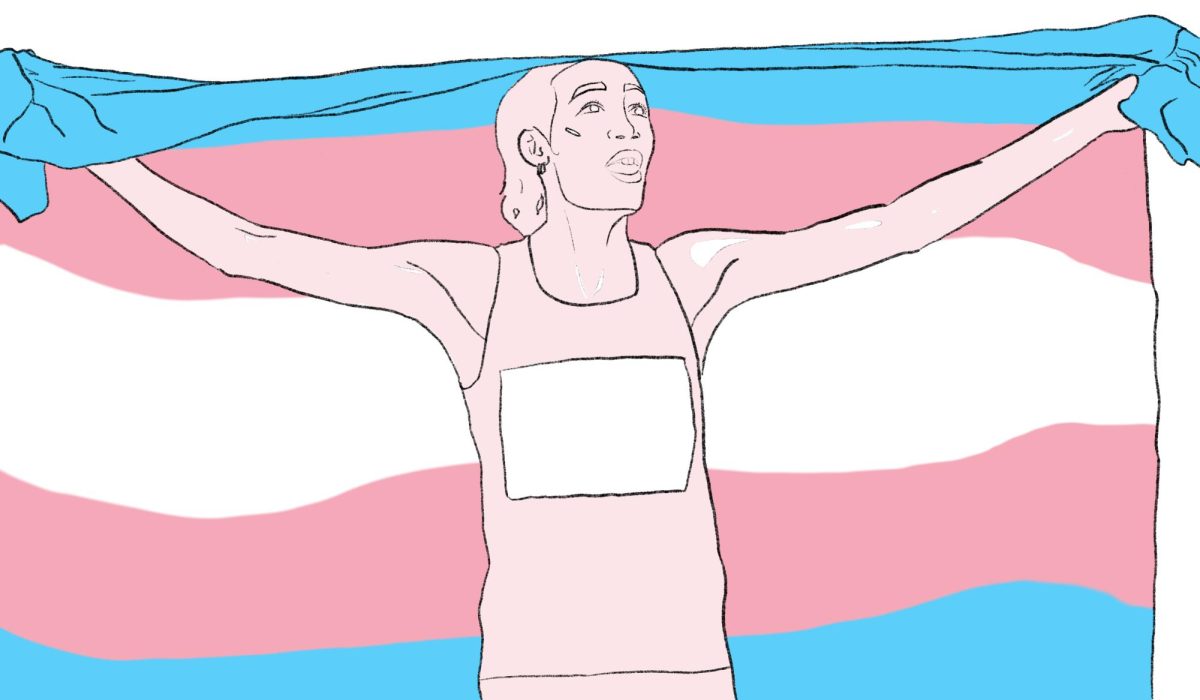Since 2020, 23 states and counting have passed legislation either restricting or banning the participation of transgender athletes in women’s sports. The issue is now more politicized than ever, resulting in many global sports federations redefining their policies. In general, there is an overwhelming air of uncertainty and novelty regarding this issue, which makes the hesitancy to accept transgender athletes unsurprising. This has led to arbitrary and exclusionary policies, which are either too strict or not strict enough, depending on who one asks. Almost all sports organizations are disproportionately sacrificing either fairness or inclusivity, but this does not need to be the case.
Firstly, there are clear genetic differences that distinguish biological males and females, which makes cross-gender competitions at high levels innately unfair. The higher levels of testosterone in biological men provide genetic advantages, such as larger and stronger bones, more muscle mass and strength, and increased hemoglobin circulation. According to researchers at Duke University School of Law, this results in a 10 to 12% performance discrepancy among elite cisgender male and female athletes. This is not to degrade women’s sports or say they are lesser in any way but to merely acknowledge the inherent differences that exist. “Different” does not imply superiority or inferiority.
Furthermore, almost every major sports organization has male and female divisions, which means even the world’s leading experts acknowledge and account for these differences. Because allowing transgender athletes to compete in women’s sports provides this objective advantage, there needs to be some level of restriction. As a result, organizations that do not have such limitations in place, like the International Powerlifting Federation, have unfairly lenient policies.
Many organizations, like the International Olympic Committee, are mandating athletes to undergo hormone therapy before competing, but these requirements are insufficient to level the playing field. For example, a study from the British Journal of Sports Medicine found that transgender women may retain an advantage in upper body strength and cardiovascular endurance for over two years after beginning hormone therapy. Meanwhile, the IOC requires transgender women to receive hormone therapy for only 12 months prior to competition. Given that the Olympics are the most prestigious and respected athletic competitions, the IOC has the responsibility of balancing inclusivity and fairness. However, it seems they are neglecting the latter, as the science suggests one year is just not long enough to guarantee fair competition. Since the Olympics occur every four years, it is not unreasonable to extend the required time by at least a year, especially if it means a level playing field for all who have dedicated their lives to their respective sports. Many other organizations, like the NCAA, have similar timelines for transitioning and must also consider stricter policies.
This delayed effect, however, does not mean hormone therapy is completely ineffective. For example, a study from the International Journal of Environmental Research and Public Health states that transgender women lose 5 to 10% of their muscle mass after one year of hormone therapy, which is not insignificant. The problem is that elite cisgender male athletes can have up to 75% more muscle mass than their female counterparts. Considering that transgender women had testosterone circulating for upwards of 5 years prior to transitioning, it only makes sense that more time would be needed to fully compensate for those initial advantages. The issue is not regarding hormone therapy’s efficacy, which is a separate conversation, but about allowing adequate time for a process that inevitably takes over a year to take full effect. Therefore, policies that require fewer than two years of hormone therapy should be considered insufficient in fostering fair outcomes and thus overly inclusive.
On the other hand, it is equally important to acknowledge that some restrictions are too severe and sneakily alienate transgender athletes. For example, World Aquatics, the international governing body for aquatic sports, bans transgender athletes from competing unless they transitioned before the age of 12. Considering that gender dysphoria tends to peak much later — often around the ages of 17 to 19 — and there are health concerns with pre-puberty transitions, this has a similar effect to an outright ban. As a result, this exception merely stands as a half-hearted guise of inclusiveness. Studies have shown that cisgender male and female athletes display extremely similar athletic performance prior to puberty, so this policy takes the polar opposite approach from the IOC by upholding fairness at the cost of inclusivity. The problem is that it outcasts the transgender community in yet another realm of society. Although many policies do need to be fairer, this portrays the need for a middle ground that considers the issue’s nuances.
Ultimately, there is a delicate balance between inclusivity and fairness that needs to be found within the sports world. A consistent inability to incorporate both of these concepts simultaneously is simply insufficient in modern times and will continue to cause controversy in the athletic community.








